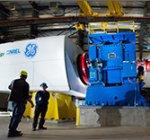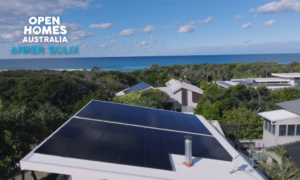The USA’s National Renewable Energy Laboratory (NREL) has unveiled a new wind turbine test facility capable of simulating thousands of hours of real-world operations on the largest on-shore turbines currently commercially available.
The five-megawatt (MW) Dynamometer Test Facility at the NREL’s National Wind Technology Centre (NWTC) is designed to lower the cost of wind energy by rigorously testing the drive trains of wind turbines before they are shipped out and installed at wind farm sites, where they are expected to last for up to 20 years in often harsh conditions.
The NREL facility allows engineers to simulate normal or extreme stresses and control them through a turbine’s mechanical and electrical systems. This high-tech approach, according to the NREL, allows a wind turbine drive train to go through the most realistic tests possible inside a laboratory setting.
“The non-torque loading system is what really sets this facility apart from other comparable test sites,” NWTC Dynamometer Project Manager Mark McDade said. “This allows us to test the drivetrain system with the types of loads that it will see in a real-world application. It’s a very important feature for a test apparatus because the adverse impacts these types of loads can have on a system are significant.”
Another feature of the facility is a Controllable Grid Interface, which lets engineers and turbine manufacturers observe how products react to program power grid disturbances such as high-and-low voltage events. The system is not limited to wind turbines, but can be applied utility-scale solar PV power plants, PV inverters, and battery systems.
Real-world simulation in a controlled environment is the key to lowering the cost of renewable energy for owners of wind power plants, and consumers, according to NWTC Project Director Mark McDade.
“As more and more renewable energy generation and storage technologies are added to our electricity mix, it is critically important that we understand how these systems will perform on the larger electric grid, how they will react to disturbances, and how they will be able to provide benefit to the grid from a systems integration standpoint,” he said.
Source














































